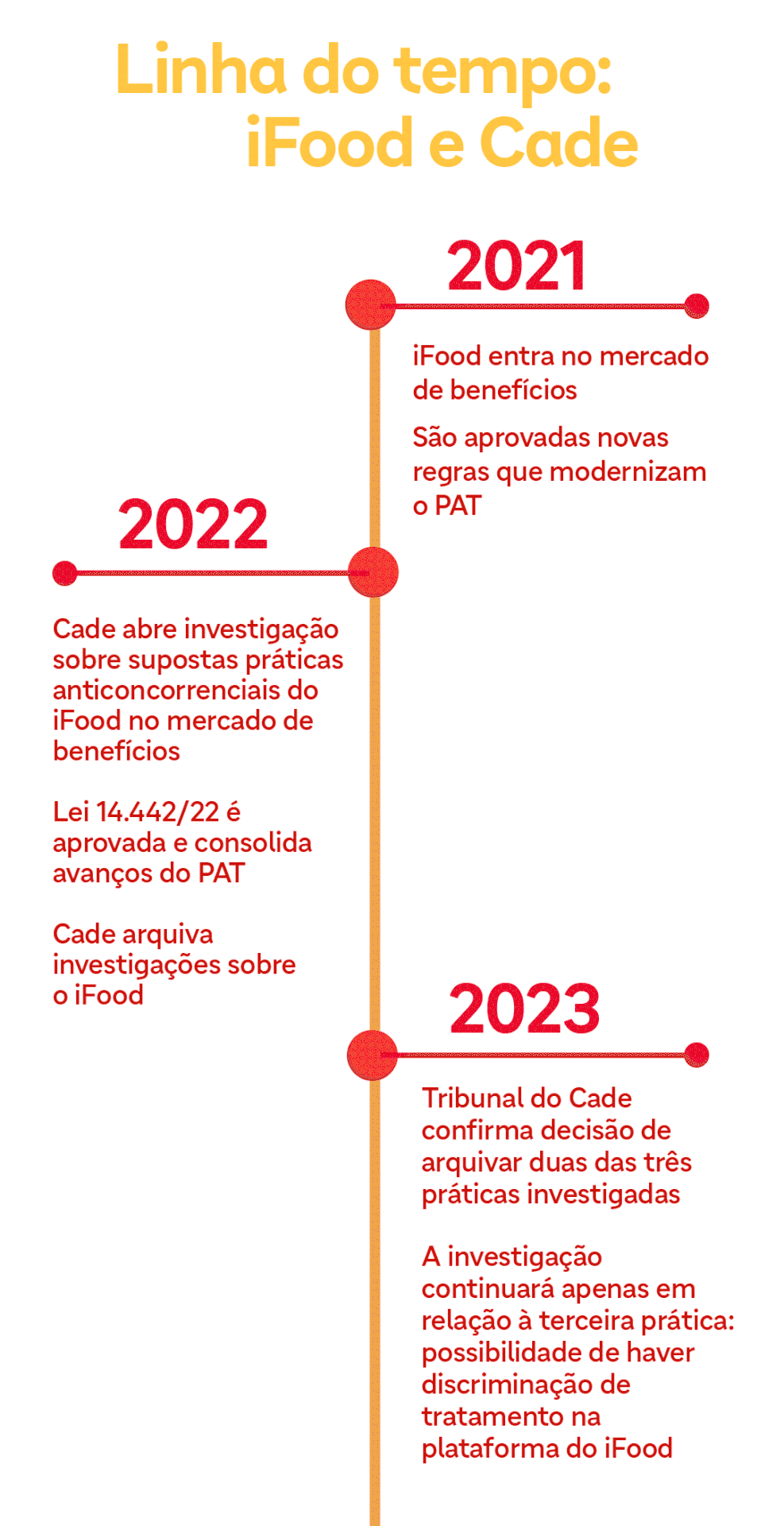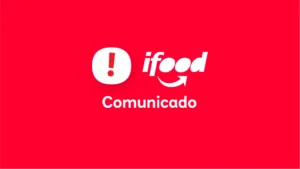On February 8, Cade iFood (Administrative Council for Economic Defense, which ensures free market competition) confirmed the decision to archive two of the three practices investigated in 2022 after a complaint made by ABBT (Brazilian Association of Worker Benefit Companies), which represents incumbent meal and food voucher operators.
Since 2021, iFood has been operating in the benefits market by offering a card that combines meal and food vouchers, the iFood Benefits — which in 2022 began to include new benefit categories, such as transportation and education.
The open investigation sought to evaluate three alleged anti-competitive practices by iFood: use of data from the platform to prospect for business in the benefit voucher market; cross subsidy between the platform and the benefit voucher segment; and discrimination from competing meal voucher operators on the platform.
In October 2022, Cade's General Superintendence archived the investigation into these complaints concluding that there was no evidence of any anti-competitive practice by iFood. This decision was confirmed by the body in December 2022, after analyzing and rejecting an appeal presented by ABBT.

What is being investigated now?
In February 2023, the CADE Court confirmed the closing of the case in relation to two of the three practices investigated. The investigation will continue only in relation to the third point: the possibility of discrimination in the treatment of competing meal voucher operators in the application.
In practice, this decision does not presume guilt or indicate the existence of evidence of something that does not comply with competition legislation: it only deals with the continuity of the investigation in relation to a specific point.
What does iFood say?
iFood does not have a differentiated and exclusive qualification model for iFood Benefícios to the detriment of competing benefit companies.
What happens is that new digital companies (such as Caju, Flash, Swile, among others) already operate under the open payment arrangement model in partnership with Visa, Master and Elo, which are already enabled to transact on the iFood platform. As a result, authorization to operate on the app is almost immediate.
In the case of companies that operate under a closed payment arrangement model, iFood can only enable the benefit card after confirming that the restaurants or markets have been accredited by these traditional benefit companies.
This accreditation is carried out by the company itself, in accordance with the rules of the closed payment arrangement.
The company is convinced that, after analyzing this issue in more detail, the antitrust authority will conclude that there is no evidence of anti-competitive practice.
What are open and closed arrangements?
O payment arrangement is a set of rules that govern the provision of payment services.
O open payment arrangement allows any institution that meets the participation criteria established in the arrangement's regulations to carry out payment activities.
This is the case, for example, with branded cards, which can be used in any commercial establishment.
In the open arrangement, consumers do not need to worry about asking whether the card is accepted or not at that location. This is because the accreditation of the commercial establishment can be carried out by any accreditor that is part of the arrangement.
In the closed payment arrangement, the payment methods linked to the arrangement can only be used in a network of commercial establishments accredited by the card issuing company (or company in its economic group).
This negotiation is done between establishments and issuing companies, which can then control the rate charged on their network.
What is the new PAT and what are its benefits?
In 2021, the federal government approved new labor rules, which modernized the PAT (Worker's Food Program) and opened up more competition in the market for offering meal and food vouchers.
In this scenario (from Cade iFood), restaurants can negotiate better rates, reduce their costs and manage to charge better prices. And the consumers have more freedom of choice (as they will be able to choose the brand for their food and meal vouchers from June 2023) and can swipe the cards on any network.


